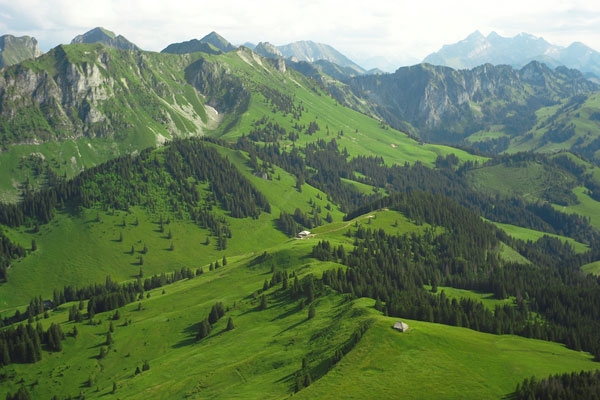
Question sent by RAFAEL MESA MANZANO (Manises). JULI PERETÓ answers:
That plants on Earth are green is not sheer chance, but the result of a long evolutionary history determined by the atmosphere. But, could it have been otherwise? Why are they mainly green, and not blue or red for instance?
Plants on the surface of the Earth descend from organisms originated and evolved under water. If we take a look into photosynthetic aquatic organisms such as bacteria and algae, we will find them of many different colours; in the sea there is a wide range of greens, browns, reds, yellows…But, why does green predominate outside water? The most accepted thoery is that photosynthetic organisms have optimized their visible light —photons— collection systems in accordance to availability. Sunlight has not been always as intense and, therefore, the amount of photons that have arrived to the Earth has varied along history (in fact, sun brightness increased a lot in its early history). In addition, how the atmosphere filtrates light has also changed its chemical composition, where oxygen and ozone play key roles— two absent components in the Earth’s primitive atmosphere. Finally, we have to take into account the effect of water filtration in the quality and quantity of light at different depths below the surface.
Sunlight is rich in red light photons but poorer in the most energetic photons, the blue ones. Photons of intermediate energy (green ones) are not very energetic, nor abundant. Chlorophylls (molecules responsible for colouring plants, and what is more important, the true inventors of photosynthesis) are «focused» on catching that part of the solar spectrum that is most abundant (red one) as well as the most energetic one (blue one): that is why we see chlorophyll green. They are like antennae optimally oriented to catch the kind of light that comes from the sun. Other photosynthetic aquatic organisms have a rich repertoire of pigments —other colours— that enables them to catch those regions of the solar spectrum that reach deep waters. Unsurprisingly, photosynthetic organisms that emerged from the sea and conquered the Earth were those that caught the sunlight that reached the Earth’s surface. That is, green organisms.
But, what would have happened if instead of sun, our planet orbited around a star with different brightness characteristics? With a lot of scientific imagination, Nancy Y. Kiang1 depicts worlds with blue plants, or even black ones, depending on their proximity to a class F star (which radiates many blue photons and plants should protect themselves with pigments of this colour) or to a class M star (a small red star), which emit a very weak light, which would give an advantage to those plants that can catch every kind of photon (i. e. black stars) over the others.
1. Kiang, N.Y., 2008. «The color of plants on other worlds». Scientific American 298: 48-55. (Back to text)
Juli Peretó. Biochemistry and Molecular Biology Department, Institut Cavanilles de Biodiversitat i Biologia Evolutiva, Universitat de València.





